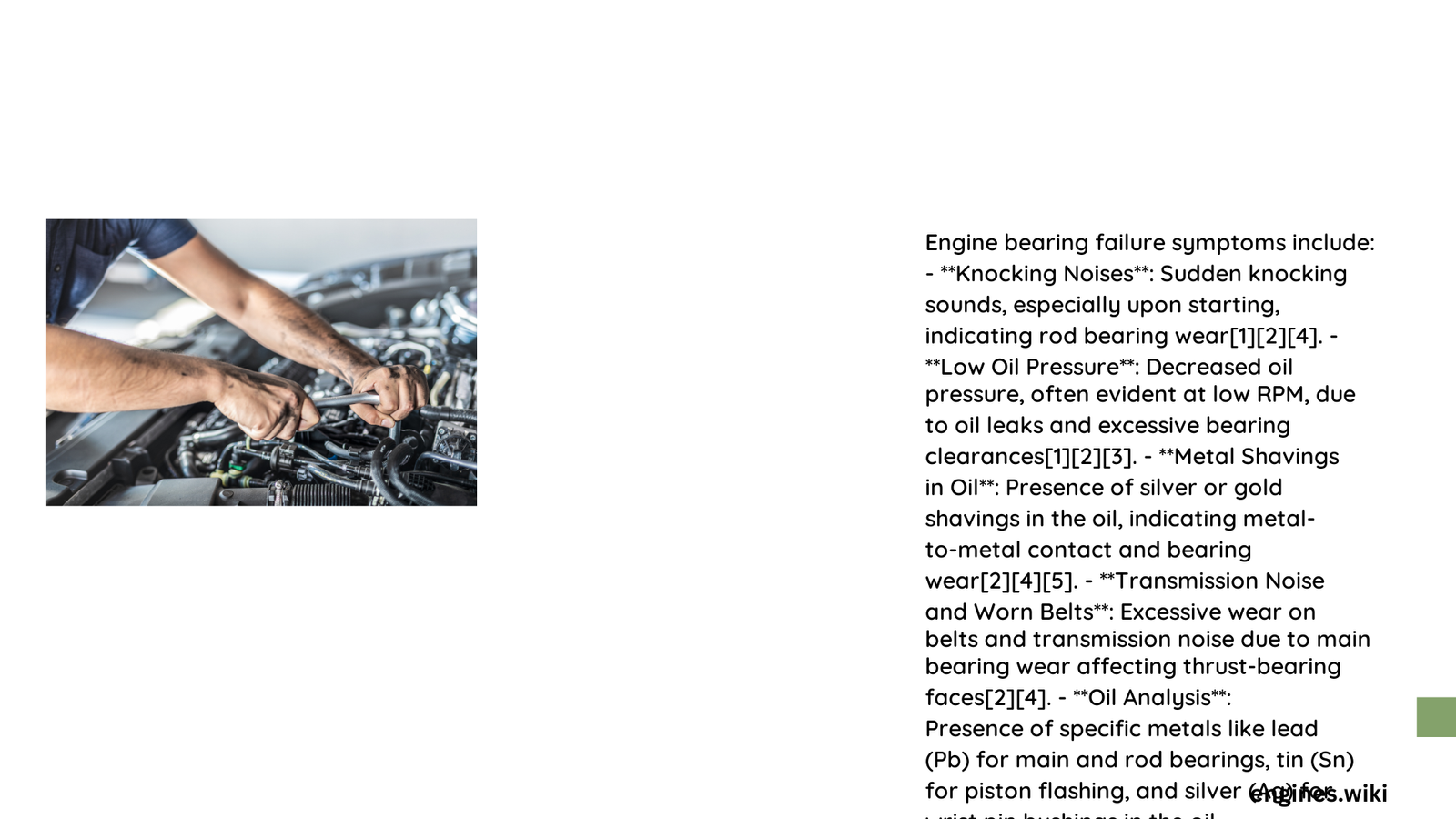Engine bearings are critical components that support rotating shafts and enable smooth mechanical movement. When these bearings start to fail, they exhibit distinct symptoms that can signal impending mechanical breakdown. From unusual noises and vibrations to temperature fluctuations and oil contamination, understanding these warning signs can help prevent catastrophic engine damage and expensive repairs.
What Are the Primary Warning Signs of Engine Bearing Failure?
How Do Engine Bearings Produce Unusual Sounds?
Engine bearings typically communicate their deterioration through specific noise patterns:
- Rod Knock Characteristics:
- Hammering sound increasing with RPM
- Most noticeable during low-speed engine operation
- Indicates significant clearance between rod and crankshaft
| Noise Type | RPM Range | Intensity | Potential Cause |
|---|---|---|---|
| Rod Knock | Low-Medium | Moderate to High | Bearing Wear |
| Metallic Tapping | Idle | Low to Moderate | Initial Bearing Damage |
| Continuous Rattling | All Ranges | High | Advanced Bearing Failure |
What Temperature Indicators Signal Bearing Problems?
Temperature is a critical diagnostic factor for engine bearings:
- Normal Operating Temperature: 150-180°F
- Warning Zone: Above 200°F
- Critical Threshold: 250°F and higher
Key Temperature-Related Symptoms:
- Rapid heat buildup
- Inconsistent temperature readings
- Accelerated oil degradation
- Increased friction noise
How Does Oil Contamination Reveal Bearing Issues?
Oil analysis provides crucial insights into bearing health:
- Metal Particle Indicators:
- Silver shavings: Aluminum bearing wear
- Copper residue: Bearing cage deterioration
- Steel fragments: Advanced mechanical damage
What Vibration Patterns Suggest Bearing Failure?
Vibration analysis offers sophisticated diagnostic information:
- Frequency Ranges:
- Early Stage: 250-350 kHz
- Progressive Damage: 500-2,000 Hz
- Advanced Failure: Increased random ultrasonic noise
Can Visual Inspection Detect Bearing Problems?
Visual examination can reveal critical bearing wear:
- Physical Inspection Checklist:
- Discoloration of bearing surfaces
- Scoring or scratching
- Uneven wear patterns
- Visible metal debris
Preventive Maintenance Strategies

How to Minimize Engine Bearing Wear?
- Regular oil changes
- Use high-quality lubricants
- Monitor engine performance
- Address unusual sounds immediately
- Perform periodic vibration analysis
Technical Recommendations
- Recommended Oil Analysis Frequency: Every 3,000-5,000 miles
- Professional Inspection: Annually or per manufacturer guidelines
- Replacement Interval: Depends on vehicle make, model, and usage
Warning: Immediate Action Required
If you experience multiple symptoms simultaneously, immediate professional inspection is crucial to prevent total engine failure.
Professional Diagnostic Approach
- Comprehensive vibration analysis
- Detailed oil contamination testing
- Precision bearing clearance measurement
- Advanced thermal imaging
Final Technical Insights
Engine bearings are precision-engineered components requiring meticulous maintenance. Early detection of symptoms can save thousands in potential repair costs and prevent catastrophic engine failure.
Technical Complexity
The intricate nature of engine bearings demands a holistic approach to diagnosis, combining acoustic, thermal, and mechanical analysis techniques.
References:
– Machinery Lubrication Bearing Failure Guide
– SAE International Bearing Diagnostics
– Automotive Bearings Technical Resource
